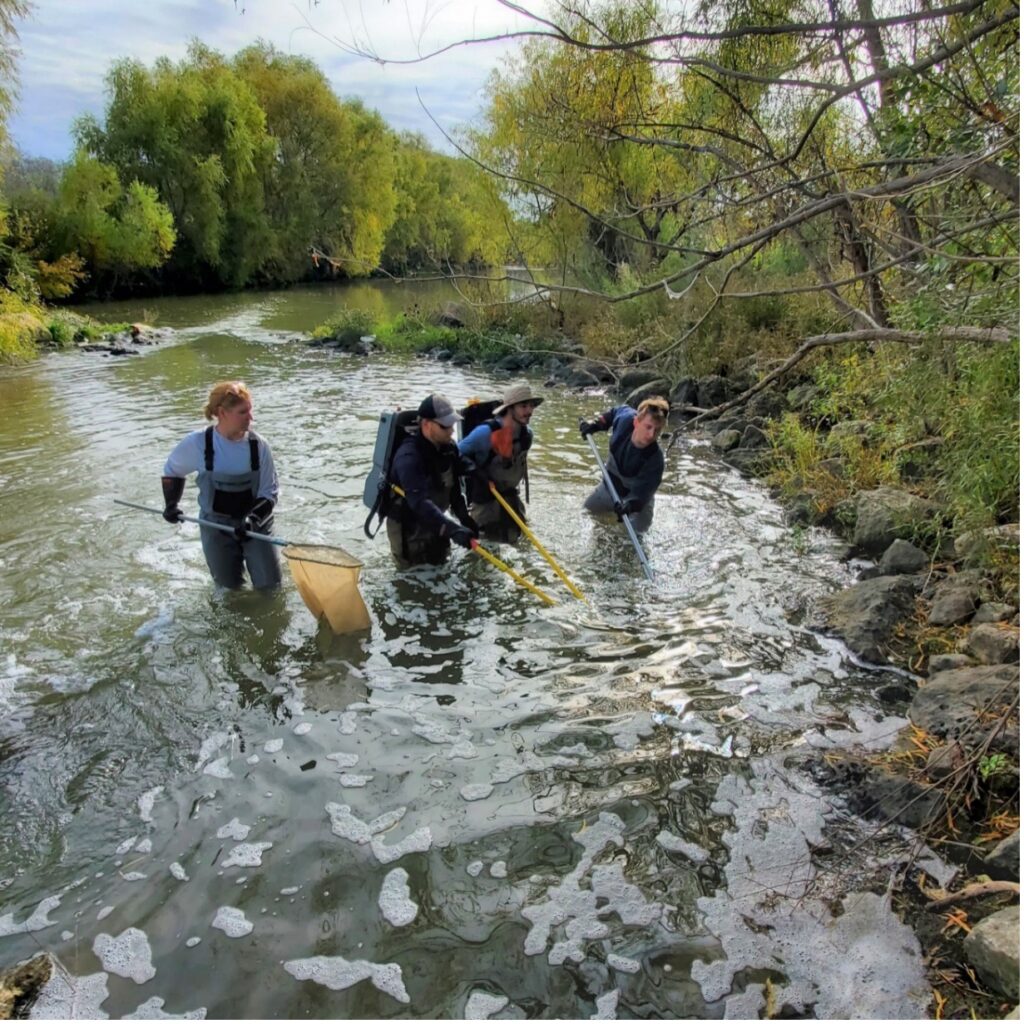Aquatic biologists and Texas A&M University (TAMU) students capturing fish in the Mission Reach.
Howdy, fellow San Antonio River enthusiasts! Join our aquatic biologists as we explore fish survey data collected during the Mission Reach Intensive Nekton Survey (MRINS) in 2023. You might be wondering—what is a “nekton”? Although it sounds like it could be the name of a Decepticon robot, “nekton” is science-speak for an actively swimming aquatic organism, or more simply, a fish! This bi-annual survey is conducted within the ecologically restored Mission Reach in the Upper San Antonio River (USAR). It was designed to help gauge restoration success by monitoring fish communities and observing their changes over time. Consider it the San Antonio River Authority’s underwater census, rigorously sampling habitats to track the abundance and diversity of the San Antonio River’s aquatic species. Results from the MRINS play a significant role in shaping management and restoration strategies for the future.
One objective of the MRINS is to assess the ongoing success of the ecological restoration efforts in fostering the return of native fish species to this urban stretch of the San Antonio River. Additionally, the MRINS can be used to evaluate the USAR recreational fishery by tracking popular sport fish, such as bass and catfish, monitoring their size and abundance, and assessing angling opportunities. The River Authority’s Freshwater Mussel Reintroduction Program also benefits from fish data collected. Let’s dive into the specifics that our biologists found in 2023!
More Fish in the Net
During the 2023 MRINS, a new species was discovered in the Mission Reach: Spotted Gar! The Spotted Gar (Lepisosteus oculatus) is one of three native gar species in Texas and the second to be found in the Mission Reach after the Longnose Gar. The species is commonly found within slow-moving and relatively clear waters and has a unique elongated mouth with small needle-like teeth. No need to fear! These fish are not known to attack or pose a threat to humans. This discovery only adds to the diversity of species that reside within the USAR!
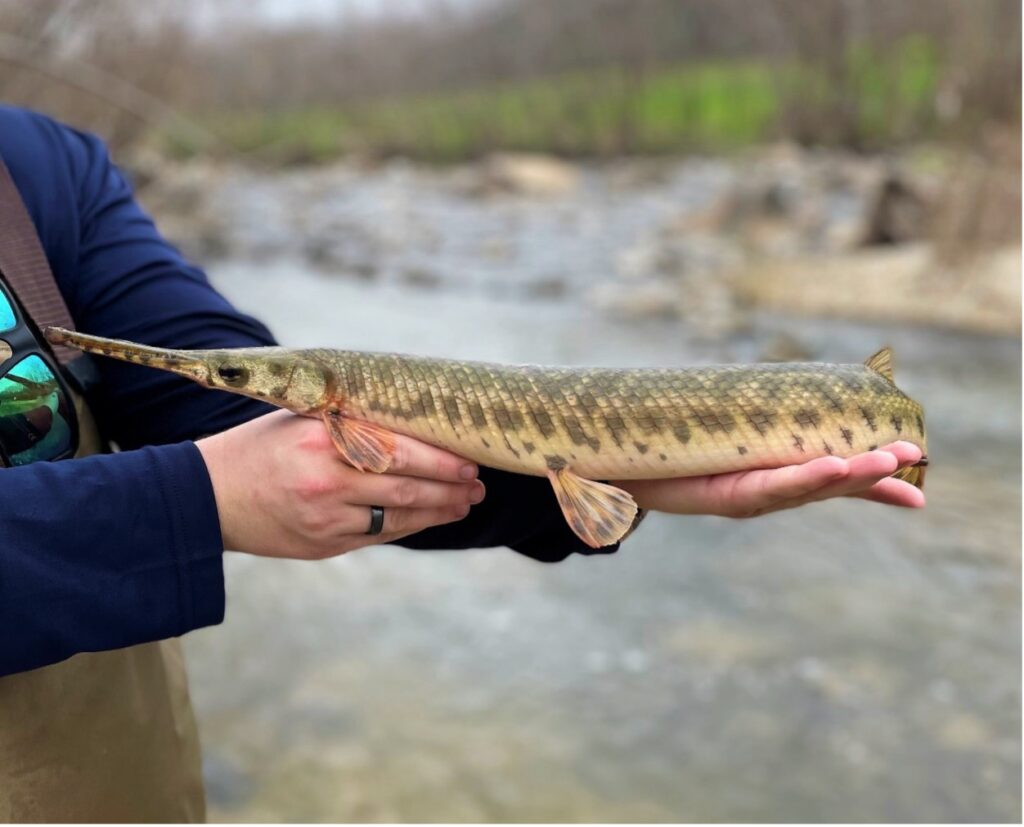
A River Authority Aquatic Biologist holding a Spotted Gar.
Additionally, there has been a steady increase in the number of fish being caught in the MRINS each year, with the greatest number of fish captured in 2023! The observed species richness, or the number of unique fish species captured during a survey period, has also been relatively stable, with a minor dip from 2021 to 2023. Minor fluctuations in species richness from year to year can be entirely normal. Reasons for this may include seasonal changes, natural increase or decrease in fish numbers, or changes in river temperature and flow.
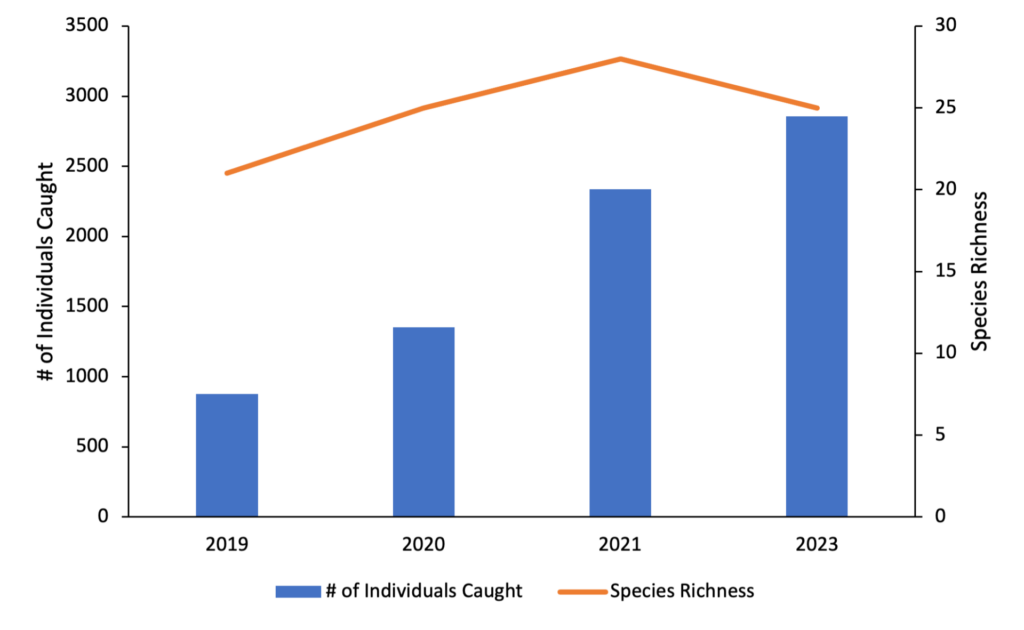
The above graph shows the number of individual fish caught and species richness over four years (2019, 2020, 2021 and 2023) during the MRINS.
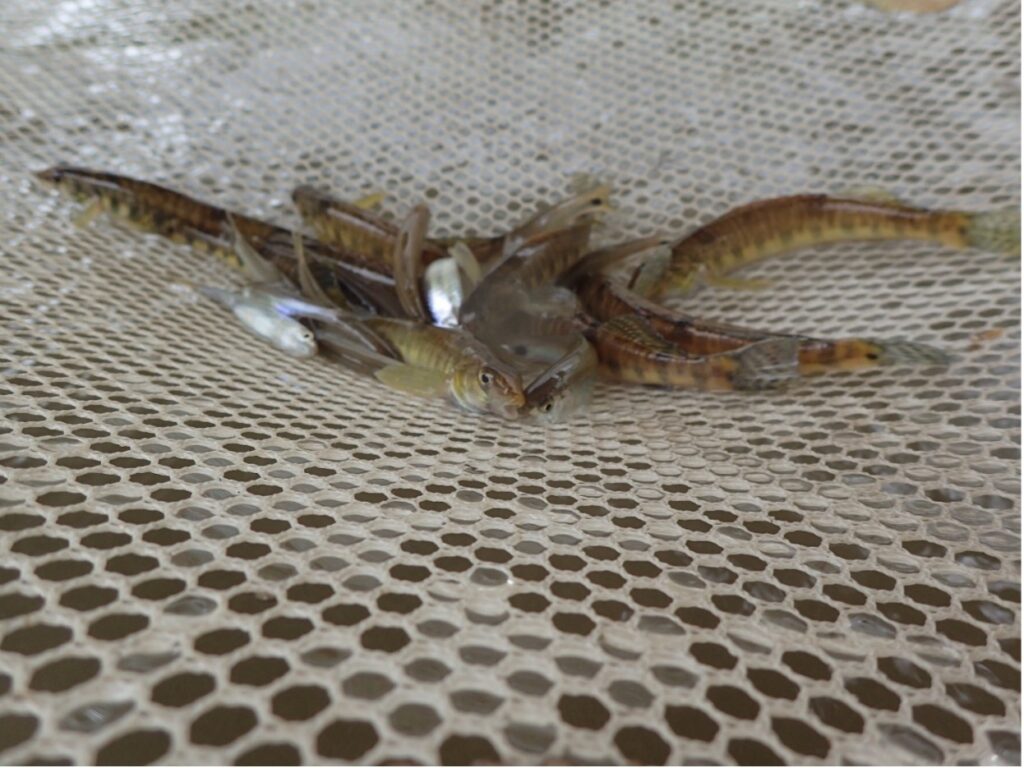
Multiple fish species, including Texas Logperch (Percina carbonaria) were pulled in a seine net collected by River Authority biologists. Because Texas logperch are sensitive to pollution, this catch indicates great water quality south of downtown San Antonio!
Bass and Catfish are Bulking Up
Our data revealed some hefty bass and catfish discovered in 2023! Our biggest Largemouth Bass weighed 4.2 lbs. with a length of 19.8 inches, the biggest Guadalupe Bass weighted 1.9 lbs. with a length of 13.3 inches, and the most sizable Channel Catfish weighed 3.7 lbs. with a length of 21.8 inches! These giant fish not only provide anglers with an excellent opportunity for that trophy catch but also signify a thriving ecosystem. The increase in size, particularly for Guadalupe Bass, the state fish of Texas, is a testament to the excellent restoration of the Mission Reach. This restoration has created conditions that allow for sizeable sport fishes to thrive, including good flow, water quality, and ample prey availability.
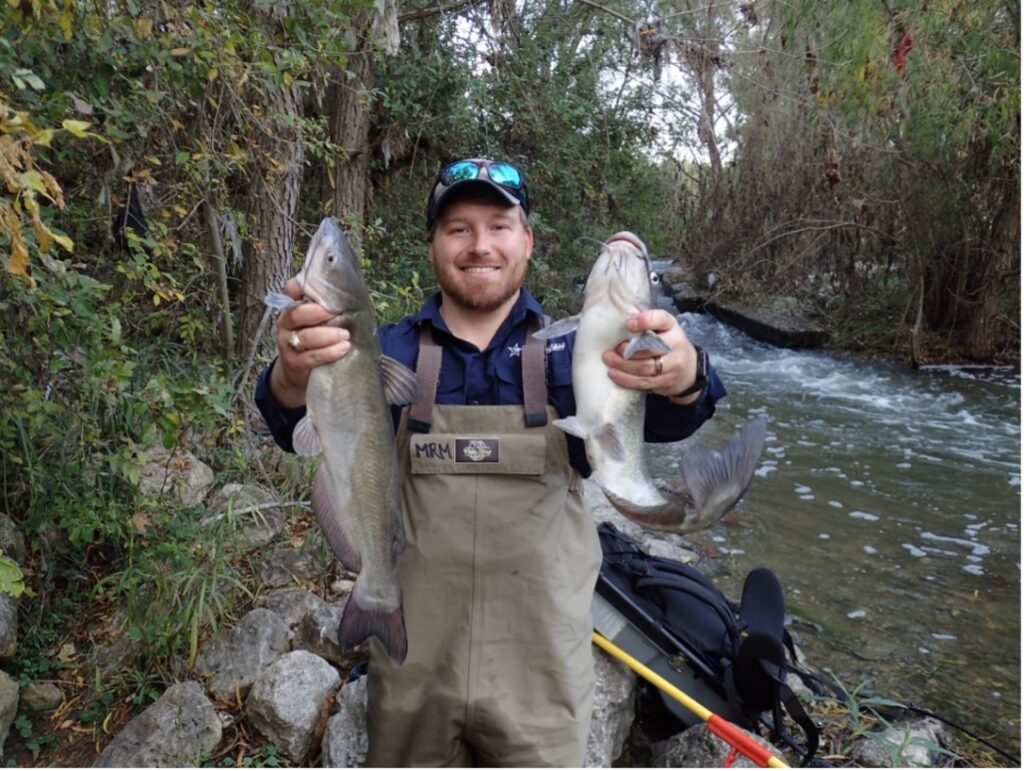
River Authority Aquatic Biologist Mitch Magruder holds two Channel Catfish collected during 2023 MRINS.
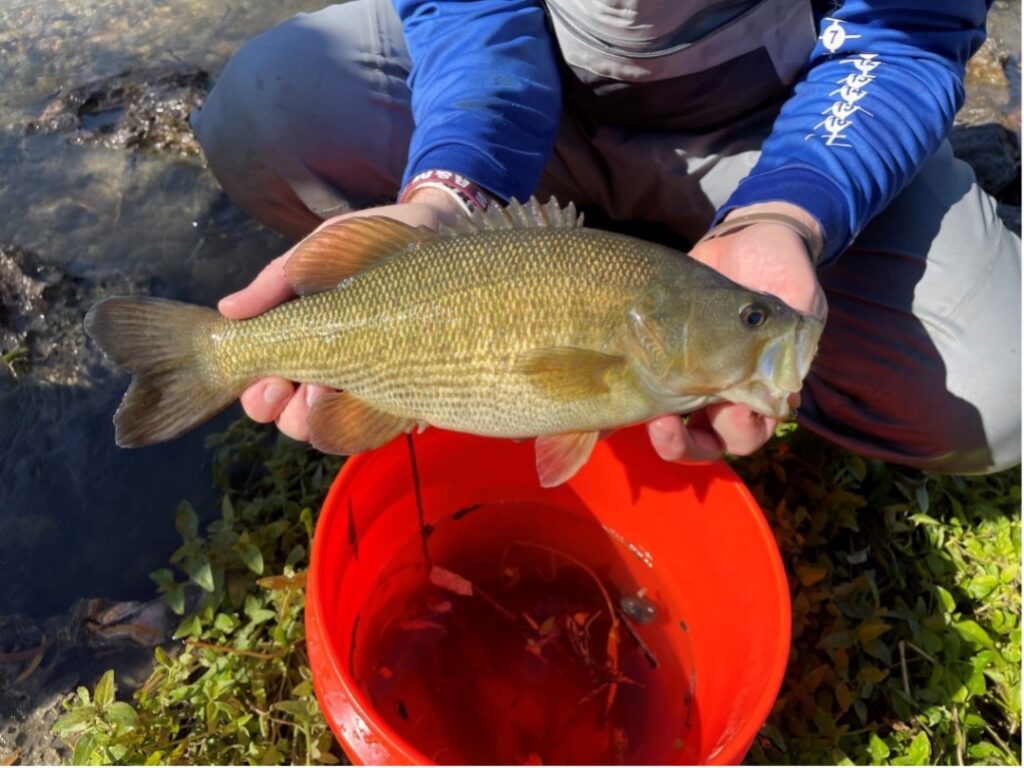
A TAMU student holds a sizeable Guadalupe Bass.
Freshwater Mussel Host Species
The MRINS also benefits ongoing efforts to restore freshwater mussel populations within the Mission Reach. The Freshwater Mussel Reintroduction Program has entered its final stages and is that much closer to the inaugural reintroduction scheduled for Spring 2024! Freshwater mussels provide benefits to the river’s health, including stabilizing the riverbed and cleaning the water. Freshwater mussels rely on specific fish species to distribute larvae and grow their populations, which you can learn more about in one of our previous blogs. Multiple species of catfish, bass, sunfish, gar, and shiner that reside in the Mission Reach are common host species for freshwater mussels. Based on the data assessed during 2023 MRINS, we are seeing higher abundances of host fish species, which will help freshwater mussels grow their populations once reintroduced by the River Authority!
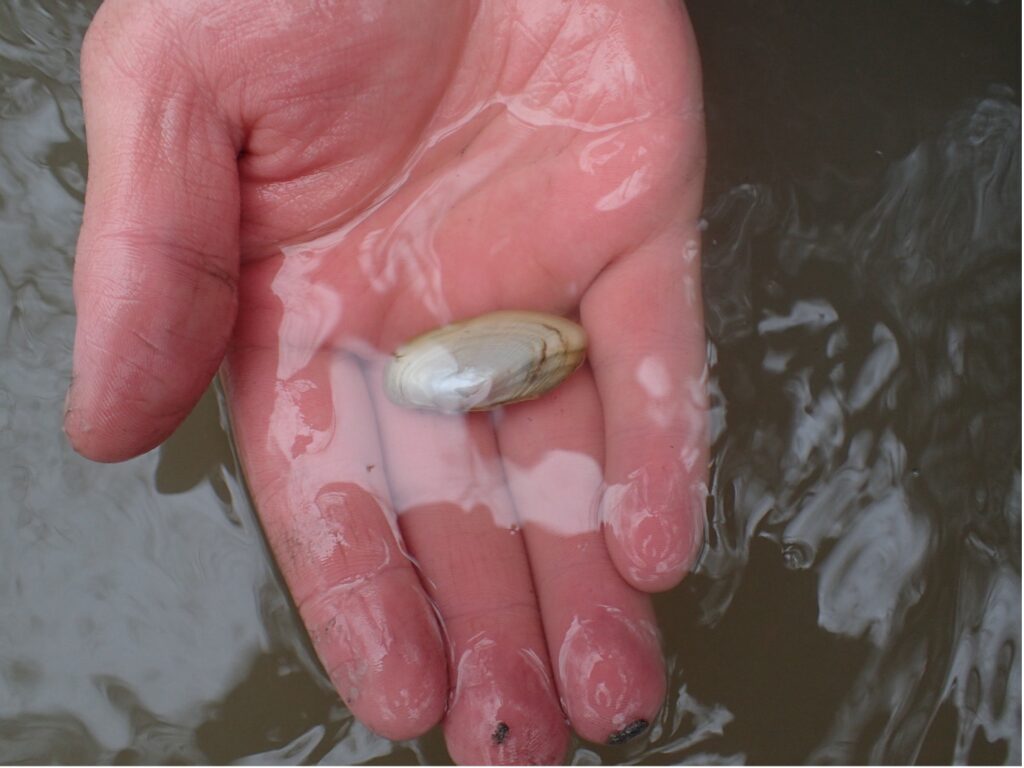
A juvenile Yellow Sandshell mussel that will be introduced into the Mission Reach this year.
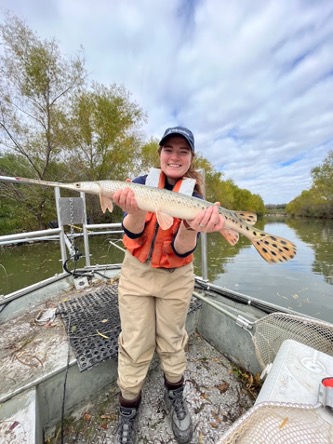
Aquatic Biologist Caille Marshall holds a Longnose Gar, a host species for reintroduced freshwater mussels.
After examining data collected from 2023, the MRINS clearly reveals an encouraging snapshot of fish communities in the Mission Reach ten years after restoration. The monitoring of ongoing and future initiatives in the watershed, like the Westside Creeks Restoration and Freshwater Mussel Reintroduction projects, will provide more insight into how we can continue to restore and maintain safe, clean, and enjoyable creeks and rivers.

